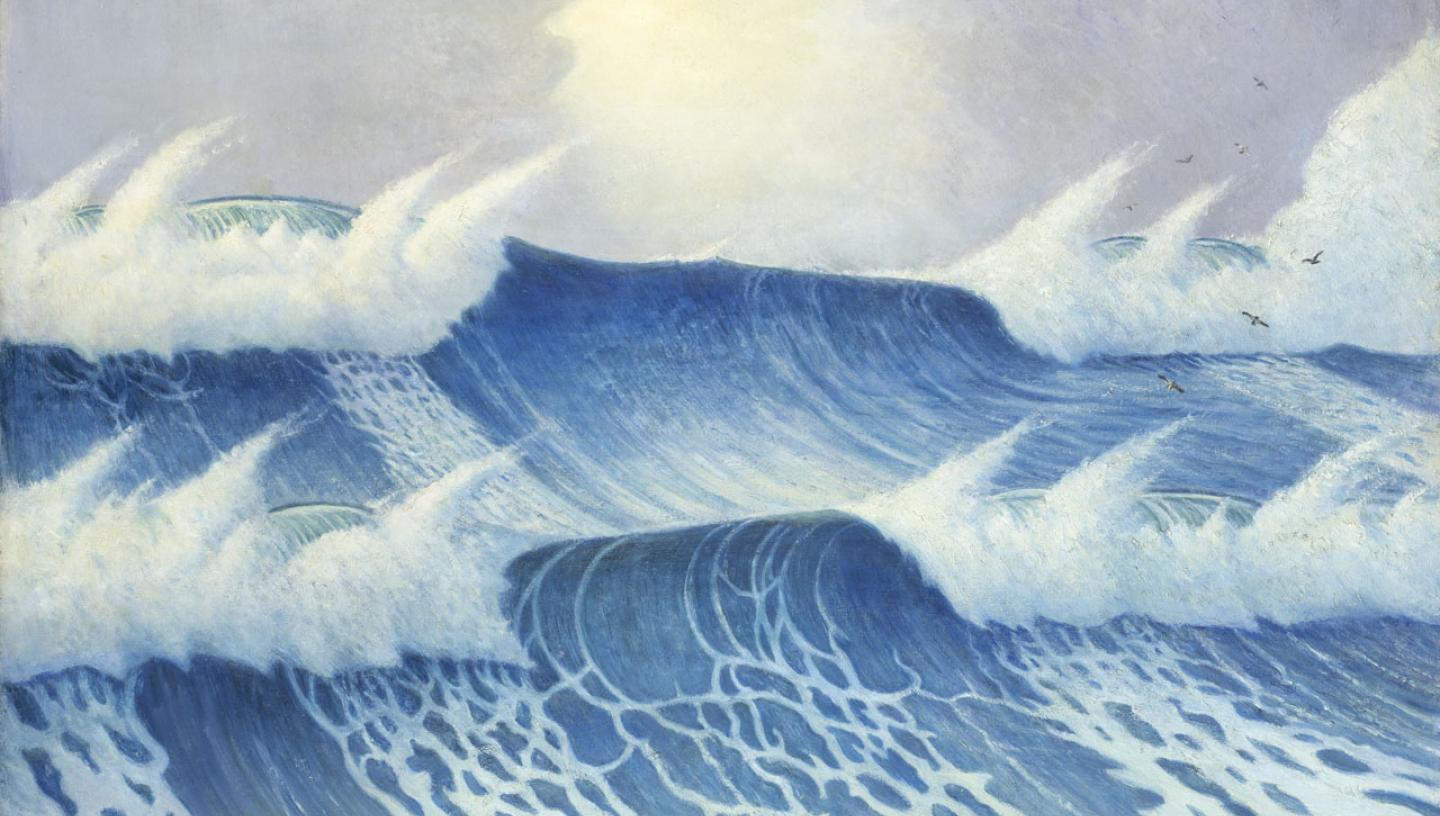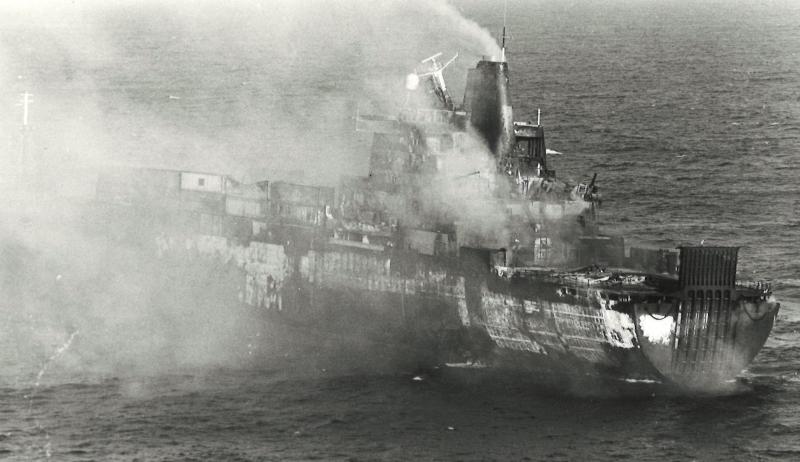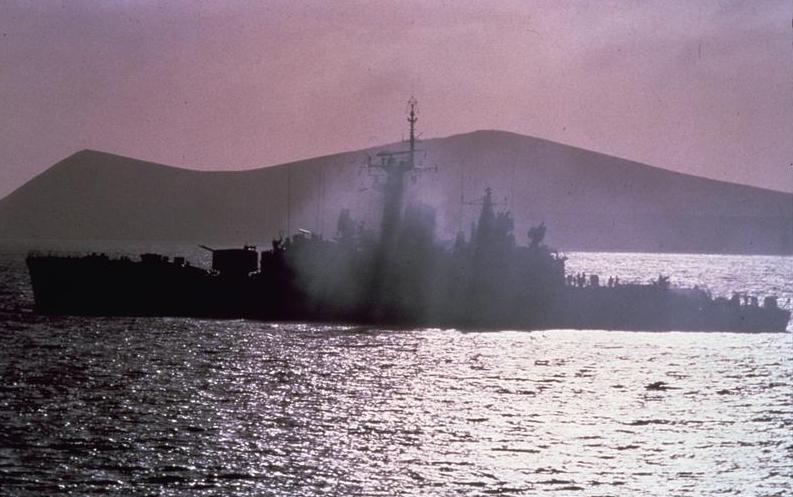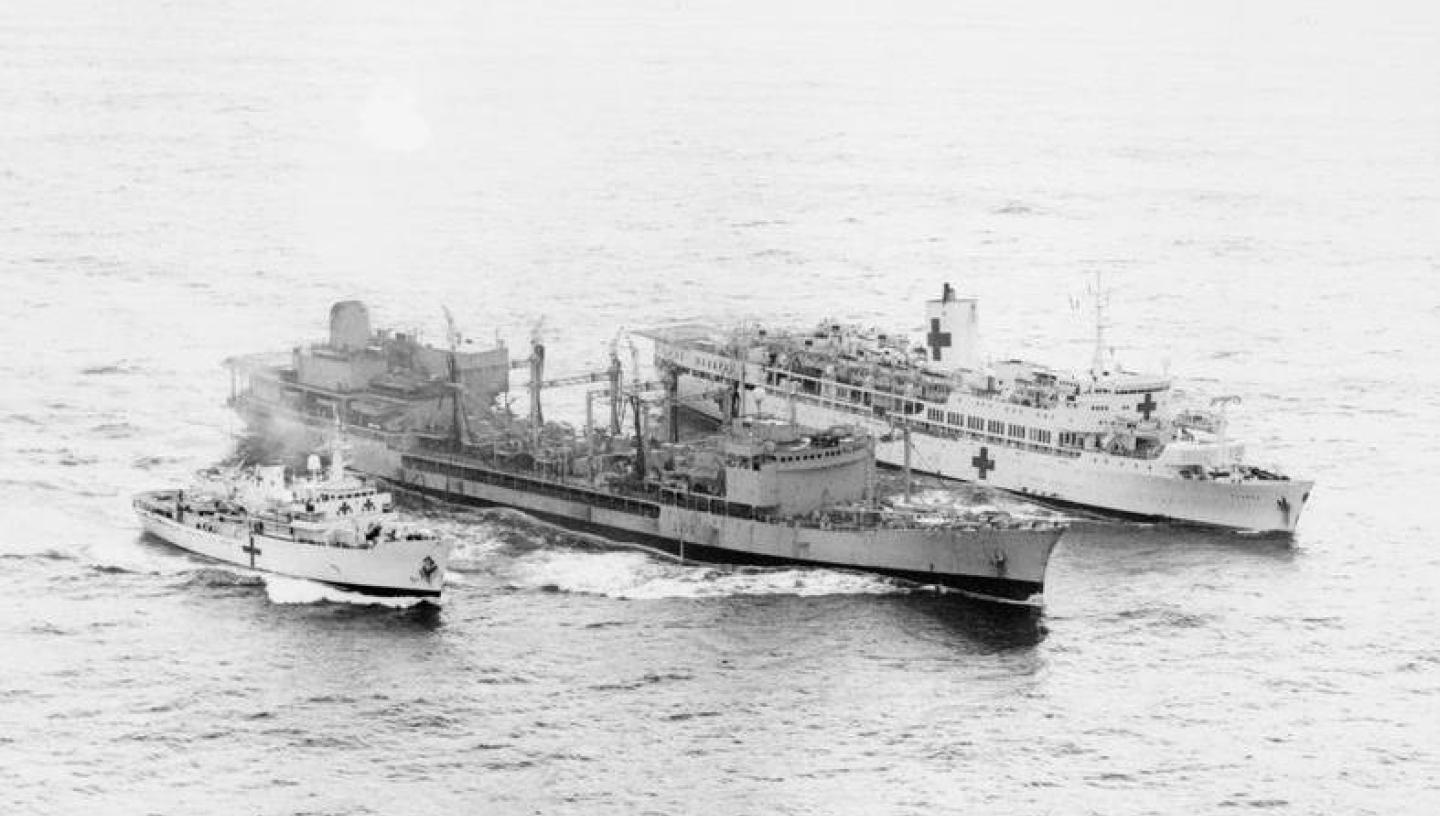
On 2 April 1982, Argentinian forces invaded the Falkland Islands.
Efforts to resolve the conflict diplomatically soon failed, and on 5 April the British government launched an amphibious task force in response. Among the southbound ships were a number of merchant vessels, requisitioned to carry troops, supplies, and equipment.
SS Uganda, formerly an educational cruise ship for school-age children, was to serve as a floating hospital throughout the conflict, becoming home to medical officers, nursing officers, nurses and medical assistants.
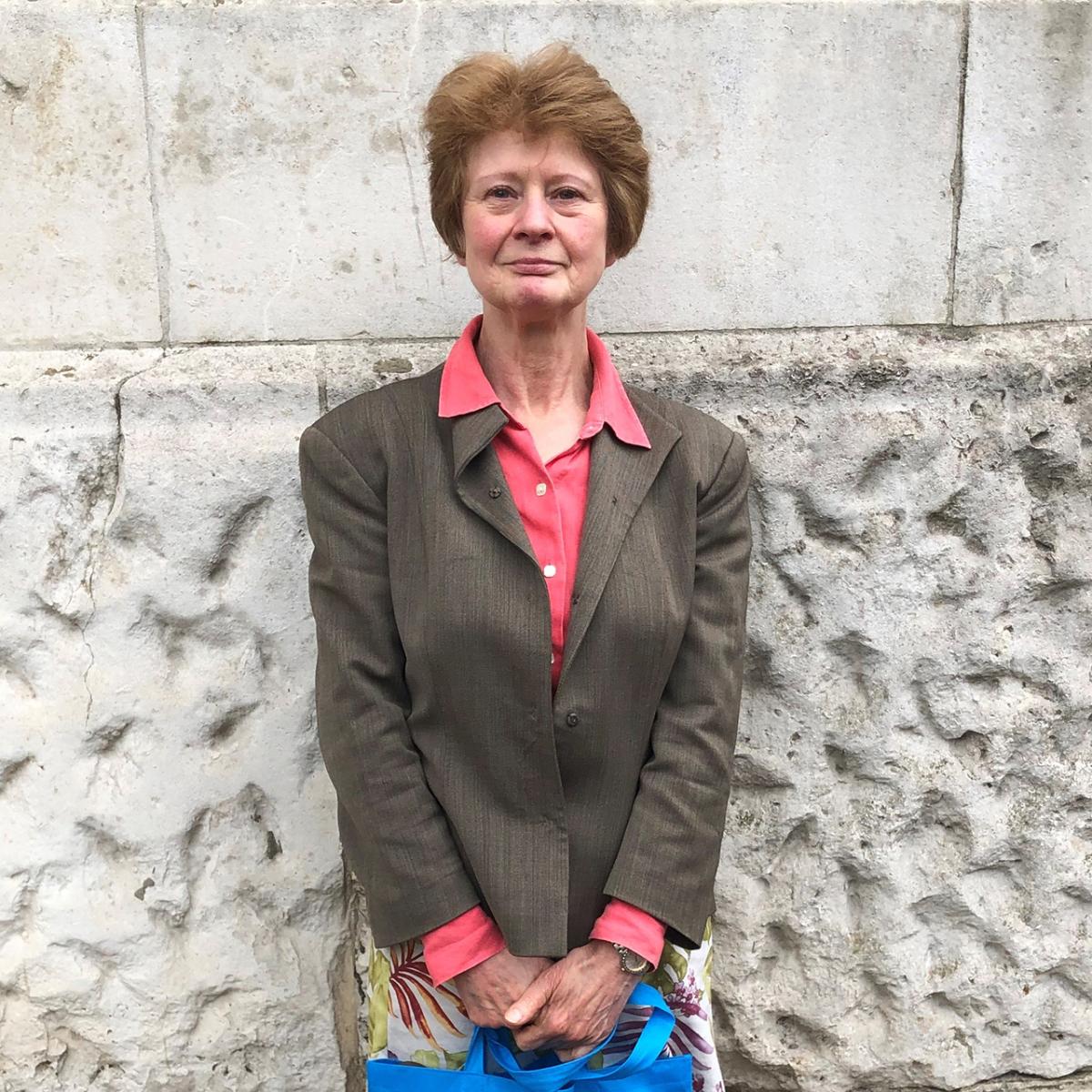
Most of the P&O crew on Uganda, who had been cruising in the Mediterranean when the conflict began, stayed aboard for the journey to the Falkland Islands, helping the medical staff and overseeing the day-to-day demands of the ship.
Alison Harris (pictured) was a purser working for P&O Ferries on the SS Uganda at the time. She became aware of the situation unfolding in the Falklands through the BBC World Service. The captain then informed the crew that the ship would be requisitioned, giving them the choice to stay on or travel home. Alison chose the former.
Before they could begin their journey however, the passengers had to be disembarked.
The ship was refitted in Gibraltar, with a helipad constructed and red crosses added, to identify Uganda as a hospital vessel.
Alison’s role involved organising stores and supplies and recording the whereabouts of everyone and everything on board. She recalls this as an exciting time – like many others, she did not expect that there would be a conflict, assuming that the situation would be resolved by politicians without the need for military action. Her family and friends were supportive of her decision to go.
Alison’s main role was to keep records of all those on board the ship, something which became more challenging as the conflict went on and the hospital became busier. This meant sometimes working unusual hours if helicopter transfers came in late. Otherwise, she notes, her hours were better than when cruising, which usually meant very early mornings and late nights entertaining.
An important part of Alison’s duties involved maintaining morale and a sense of normality on board, including typing up the daily schedules and menus as on a normal cruise. There were some films but there was no time to change them, meaning Alison can now recite most of Disney’s The Aristocats from memory.
The further south they travelled, the scarier the situation became.
The first casualties came from HMS Sheffield in early May. At this point, the P&O crew had little interaction with the patients, but soon Alison took on auxiliary tasks such as washing and chatting with the troops, among whom were a number of Argentinian casualties. The medical wards were set up in what was originally the passenger area of the ship. Alison reflects on what it was like walking through those wards.
In four months, SS Uganda treated over 700 patients. Located in the Red Cross box, an area of sea established as a neutral zone, the threat of direct attack on Uganda was low compared with other ships in the task force. Both British and Argentinian soldiers treated aboard would ultimately be transferred ashore or to Argentinian vessels.
Stores and stocks had been resupplied en route at Ascension Island, but afterwards this was done by occasional RAS (replenishment at sea). One well-received RAS contained post from the UK, as well as an abundance of Pot Noodles.
Alison learned of the end of the conflict when Surgeon Captain Rick Jolly (who managed three frontline field hospitals on the Falklands) came aboard, and the crew was summoned to the cinema to hear the news. There were a lot of cheers and a huge sense of relief.
Alison never stepped foot on the Falklands, which was heavily mined, but after six months on ship with limited contact with family, she was ready to go home.
Uganda’s return journey had to wait however; there was still work to be done while the hospital in Port Stanley remained out of action. Uganda was one of the last ships to remain in the Falklands, and therefore one of the last to arrive home. Despite less media coverage than previous ships, Uganda received a warm welcome home, made special by the crews’ families and friends. Alison recalls the morning the SS Uganda got back to the UK.
Article by Aimee Mook, Lloyd's Register Foundation Assistant Curator, Contemporary Maritime
Main image courtesy of Imperial War Museums, © IWM MH 27704
